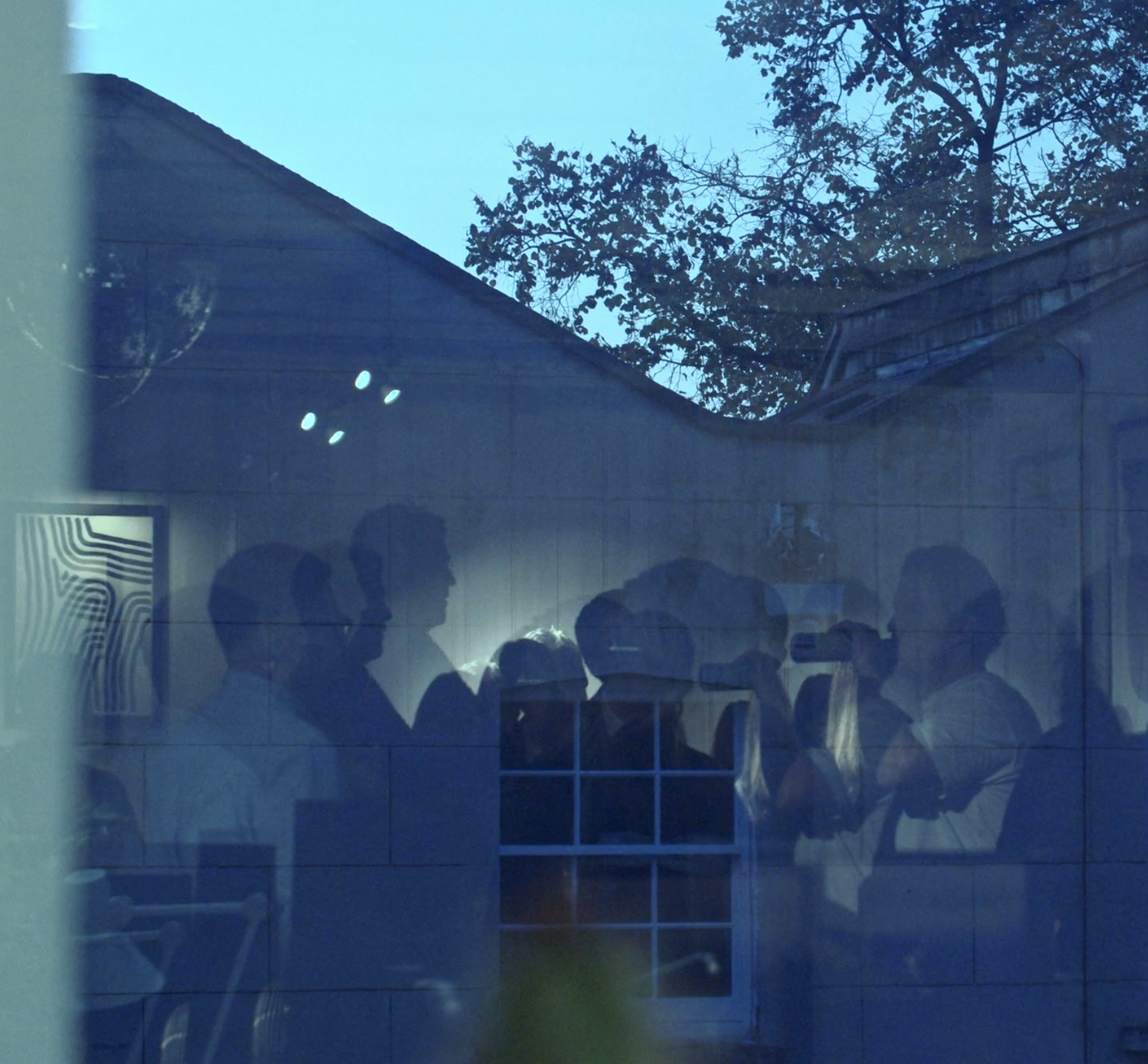Sylvia Feichtinger
on Child's Play

To celebrate our 20th Anniversary, we hosted an intimate gathering of friends at our studio in Oval.
As a part of this event, we invited three long-time collaborators to share one thought each on the future of the role of design.
Last up, Sylvia Feichtinger.
Sylvia’s connection with forpeople goes back further than forpeople itself – all the way to her university days with our co-founder Michael Tropper.
She’s one of our oldest friends, and someone we’ve crossed paths with time and again over the years. She’s led multidisciplinary design and innovation teams all over the world for some of the biggest names in tech and design, with a deep passion for how culture, technology and creativity come together to imagine what’s next.
)
)
Sylvia's thought—
"In a world facing monumental challenges innovation will feel like child's play."
Please welcome our close friend Sylvia Feichtinger.
After working across Nokia, Frog, and Peloton—we got to know each other better while working on innovation at NIO—she’s now Head of Material and Systems Innovation at LEGO.
Thank you so much! It’s great to be here.
Michael [forpeople Co-Founder] and I studied together, did our first internships together, and even went to New York to explore the world. So, it’s really special to be here today.
This talk is a great segue from our conversation on experience design.
LEGO is such an exciting company when it comes to innovation, not just in experience design through crowdsourcing and community engagement, but also in keeping things fresh after such a long history.
I don’t think there’s anyone in this room who hasn’t played with LEGO at some point.
One thing we wanted to explore is how, in a world facing huge challenges, innovation might actually be closer to child’s play than we imagine.
Absolutely.
But I think it’s important to step back and look at what innovation really means.
It’s a loaded word.
We often associate it with big breakthroughs or disruptive change, but in reality, innovation is just as much about small, incremental improvements.
I think we sometimes overcomplicate things or prioritise technology over human-centered design, and that’s something we need to rethink.
Yeah, people often mistake innovation for just being about technology or major leaps forward, but sometimes, it’s as simple as taking existing building blocks and putting them together in a new, unexpected way—something LEGO embodies perfectly.
Exactly, and that’s where play comes in.
As children, we naturally learn to innovate through play—whether it’s role-playing, building with bricks, or drawing. It’s all about imagination, exploring new ideas, and literally thinking outside the box.
Another key aspect is risk-taking: play happens in a safe space where failure isn’t feared but embraced. As kids, we experiment, fail, and try again without hesitation. That trial-and-error mindset is essential to innovation, but it often gets lost as we grow up.
Failure is a huge part of the process, and we need to highlight that more.
That’s such an important point. Even here at forpeople, I think we improve in fostering an environment where failure is seen as part of the creative process. It’s easy to get caught up in fast-paced routines, but creating space for experimentation is crucial.
For sure.
Curiosity is another major driver of innovation. As kids, we ask endless questions without hesitation. That mindset—constantly questioning, exploring, and staying open to new possibilities—is something we should hold onto.
Collaboration is also key. When we’re children, we instinctively bring in others when we need help, naturally interacting and sharing ideas. The ability to communicate ideas effectively is essential in innovation.
And finally, resilience—problem-solving isn’t just about having ideas; it’s about overcoming obstacles. That persistence is a fundamental part of making innovation happen.
If we think about all these elements—risk-taking, curiosity, collaboration, resilience—it’s clear that play is something we should integrate more into our work. It helps strike the balance between breakthrough ideas and human-centered design.
That’s a great perspective. What advice would you give to help create a more playful environment that fosters innovation?
Go out and play! Or spend time with kids—it’s in those moments that you realise how much we tend to overcomplicate things.
I have a friend at Nike who runs all his design ideas past his three-year-old. He swears it’s the best way to get an honest, clear-headed response. I’m looking forward to trying that myself in six months!
That sounds like a great approach!
Well, thank you so much, Sylvia.

This is the last of three conversations we've shared about the role of design in making the future more human.
In the first, we heard from Bill Amberg on the role of craft in making the future more human. Next, we explored the evolution of CMX with Carmel Harrison from Logitech.
Take a read.
